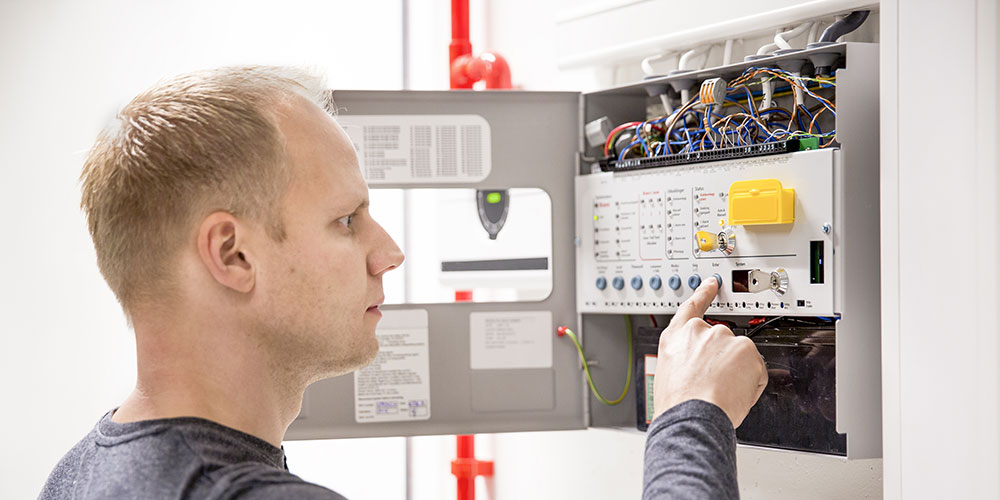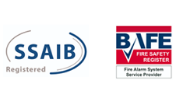What is BS5839?
BS5839 is the UK's benchmark standard, detailing practices for designing, installing, commissioning, and maintaining fire detection and alarm systems. It's divided into several parts, with Part 1 focusing on non-domestic premises and Part 6 on residential dwellings.
Key Points of Fire Alarm Installation (BS5839)
Risk Assessment:
Every fire alarm installation begins with a thorough fire risk assessment, identifying specific risks and the appropriate detection levels required.
System Categories:
BS5839 Part 1 categorizes systems as L (Life protection), P (Property protection), and M (Manual systems), each serving distinct purposes and requiring specific design considerations.
Design and Installation:
Fire alarm systems must be designed by competent professionals familiar with BS5839 requirements.
Proper zoning, detection device placement, and system types (conventional or addressable) must align with building layouts and usage.
Commissioning and Maintenance:
Commissioning ensures systems operate correctly, documented thoroughly, with certificates issued for compliance verification.
Routine maintenance is mandatory, with weekly tests by users and periodic inspections by qualified engineers.
Recent Updates to BS5839
Staying updated with the latest revisions of BS5839 is essential. Recent significant changes include:
Enhanced Clarity on Responsibilities: The updated standard clearly defines the roles of responsible persons, system designers, and maintainers.
Improved Guidance on Wireless Systems: Expanded guidance on the installation, testing, and reliability of wireless systems to address growing technology trends.
Additional Testing Protocols: Greater emphasis on battery backup functionality tests, especially for wireless and hybrid systems.
Accessibility and Inclusion: Increased consideration for accessible devices and alarm systems suitable for occupants with disabilities.
Why Compliance Matters
Adhering to BS5839 is not just a legal necessity but a proactive step in minimizing fire risks, protecting lives, and ensuring property safety. Non-compliance can result in significant legal repercussions, void insurance policies, and potentially catastrophic outcomes in emergencies.
Final Thoughts
Regularly reviewing and implementing BS5839 standards ensures your property remains safe, compliant, and ready for emergencies. Consult with certified fire safety specialists to ensure your installation meets current standards and practices.
Stay informed, stay safe.
BS5839 is the UK's benchmark standard, detailing practices for designing, installing, commissioning, and maintaining fire detection and alarm systems. It's divided into several parts, with Part 1 focusing on non-domestic premises and Part 6 on residential dwellings.
Key Points of Fire Alarm Installation (BS5839)
Risk Assessment:
Every fire alarm installation begins with a thorough fire risk assessment, identifying specific risks and the appropriate detection levels required.
System Categories:
BS5839 Part 1 categorizes systems as L (Life protection), P (Property protection), and M (Manual systems), each serving distinct purposes and requiring specific design considerations.
Design and Installation:
Fire alarm systems must be designed by competent professionals familiar with BS5839 requirements.
Proper zoning, detection device placement, and system types (conventional or addressable) must align with building layouts and usage.
Commissioning and Maintenance:
Commissioning ensures systems operate correctly, documented thoroughly, with certificates issued for compliance verification.
Routine maintenance is mandatory, with weekly tests by users and periodic inspections by qualified engineers.
Recent Updates to BS5839
Staying updated with the latest revisions of BS5839 is essential. Recent significant changes include:
Enhanced Clarity on Responsibilities: The updated standard clearly defines the roles of responsible persons, system designers, and maintainers.
Improved Guidance on Wireless Systems: Expanded guidance on the installation, testing, and reliability of wireless systems to address growing technology trends.
Additional Testing Protocols: Greater emphasis on battery backup functionality tests, especially for wireless and hybrid systems.
Accessibility and Inclusion: Increased consideration for accessible devices and alarm systems suitable for occupants with disabilities.
Why Compliance Matters
Adhering to BS5839 is not just a legal necessity but a proactive step in minimizing fire risks, protecting lives, and ensuring property safety. Non-compliance can result in significant legal repercussions, void insurance policies, and potentially catastrophic outcomes in emergencies.
Final Thoughts
Regularly reviewing and implementing BS5839 standards ensures your property remains safe, compliant, and ready for emergencies. Consult with certified fire safety specialists to ensure your installation meets current standards and practices.
Stay informed, stay safe.











